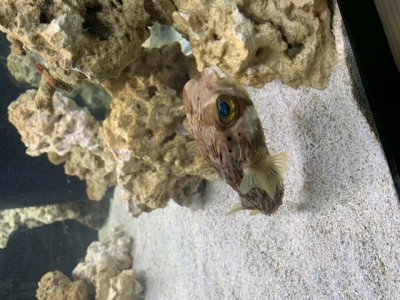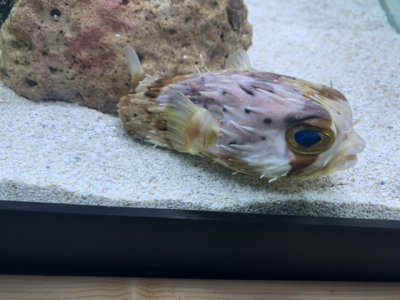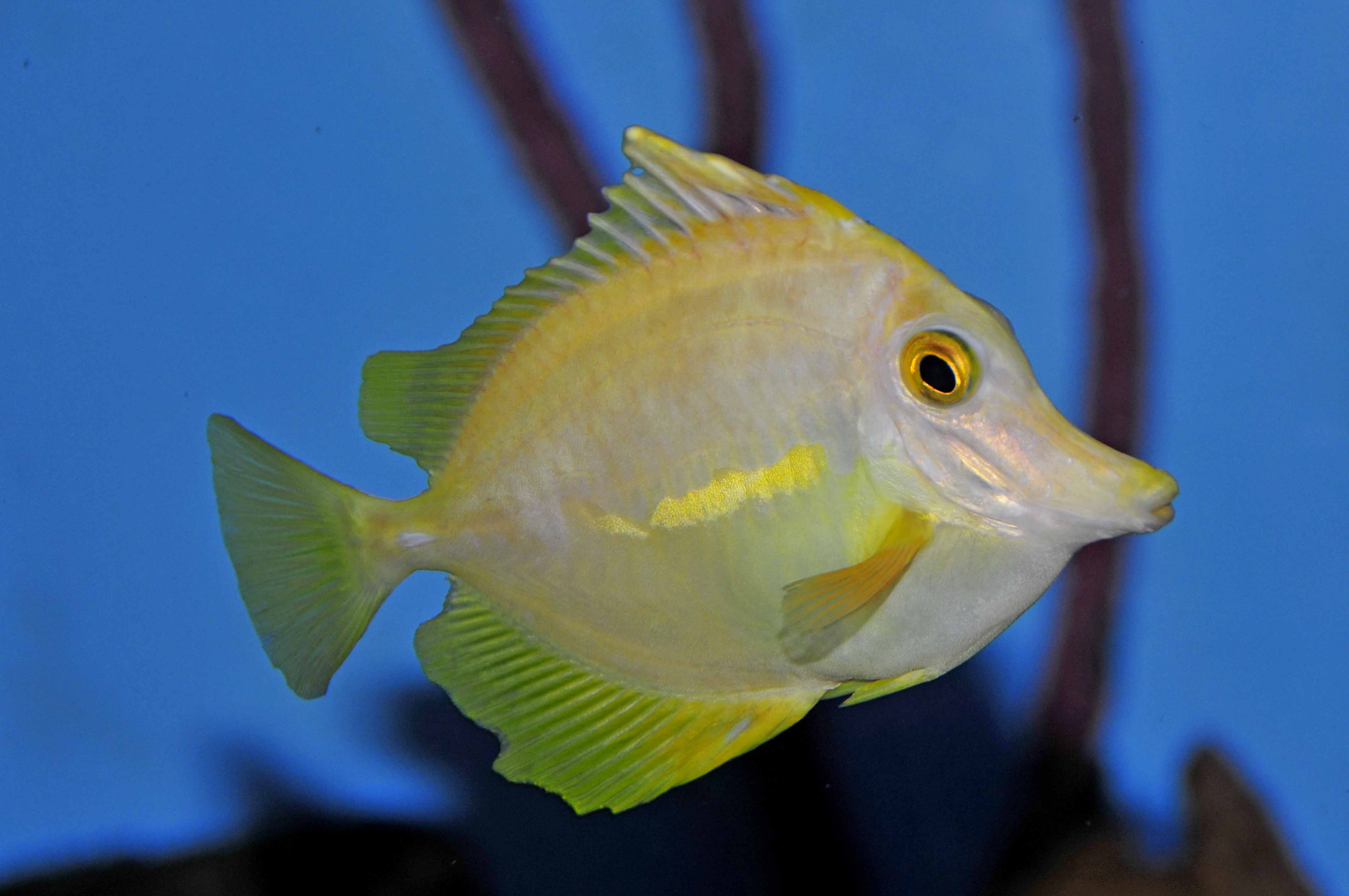Navigation
Install the app
How to install the app on iOS
Follow along with the video below to see how to install our site as a web app on your home screen.
Note: This feature may not be available in some browsers.
More options
You are using an out of date browser. It may not display this or other websites correctly.
You should upgrade or use an alternative browser.
You should upgrade or use an alternative browser.
HLLE (Head & Lateral Line Erosion)
- Thread starter Humblefish
- Start date
- Tagged users None
- Joined
- Mar 27, 2018
- Messages
- 1,387
- Reaction score
- 762
Oh man, those ears are just the cutest...I'm in love!
Definitely ready for the other one to stand up lol. He's a Belgian malinois/dutch shepherd mix.
Hi I see lots of posts about no one seeing an issue with HLLE that they can contribute to running Rox 0.8. I’ve noticed recently that it appears my tang does have HLLE. I’ve had him for nearly two years. I’ve never used any carbon other than Rox 0.8 and been running that for a year. I did have an ich outbreak and he did go into QT with copper, but that was also several months ago. I just noticed the HLLE within the last few days. Two possible points of stress are:
Added a bristletooth tang but never see any issues between him and the tang
Had a Calcium spike occur in Jan, (long story) and have managed it down to the 450 its now at. During that time, there was some ups and downs in Alk, never more than 1 dkh in 24 hours as I’ve been testing every other day to daily since that spike.
Always feeding him nori daily, as well as food soaked in selcon. Current parameters are:
CA 450
ALK 9.3 (Red Sea) or 10.1 via (Hanna) trying to figure this one out
Mg 1360
Salinity 1.025
Nitrate. 4ppm
Po4. 0.02
Have not tested for a grounding issue, need to figure out how. Otherwise any thoughts?

Added a bristletooth tang but never see any issues between him and the tang
Had a Calcium spike occur in Jan, (long story) and have managed it down to the 450 its now at. During that time, there was some ups and downs in Alk, never more than 1 dkh in 24 hours as I’ve been testing every other day to daily since that spike.
Always feeding him nori daily, as well as food soaked in selcon. Current parameters are:
CA 450
ALK 9.3 (Red Sea) or 10.1 via (Hanna) trying to figure this one out
Mg 1360
Salinity 1.025
Nitrate. 4ppm
Po4. 0.02
Have not tested for a grounding issue, need to figure out how. Otherwise any thoughts?
Getting a voltmeter today and will get a grounding probe as well. Removed the Carbon even though it's ROX. Was wondering if the ALK changes could have caused it?Purchase a titanium grounding probe either way. Less than $20 on Amazon. There are YouTube videos that show how to test.
- Joined
- Oct 16, 2019
- Messages
- 1
- Reaction score
- 0
- Joined
- Mar 13, 2018
- Messages
- 1,981
- Reaction score
- 1,898
OK so this my reefing friends is a curiosity after reading through this thread.
My Kole tang went through a long 12 week QT in a 20G tank and he did get HLLE.
After all the medications were done after six weeks, I started feeding him more often.
LRS Herbivore, PE Mysis, and Nori. I have always added Selcon and Kent Marine extreme garlic to the frozen foods, not the Nori.
He got better, and was still in QT for another month some scaring went away.
I had no choice but to temporarily add him to my Nano tank, as I had a delay in my main DT setup. Yes too small and all but he was happy, healthy, and eating.
He was in the Nano for way to long another three months, but still he was cool.
Well my main tank finally was completed and cycled so he was transferred to his new 140G home. Its been in his home six weeks now.
This week I noticed he is rapidly accumulating the scaring again. Everyday its more.
So looking into finding the cause I came across this thread.
Can't be to small a tank as he now has a huge home, no new tank mates just the ones he has been with in the Nano.
Now I have to suspect the Rox carbon, as the foods I feed have been the same for months now. I did add the carbon maybe a month ago. Until last week I did not notice anything.
I did NOT feed the Nori to him once he got into the main DT as he has cleaned every spec of brown algae on the rock work. My mistake maybe.
Anyway he got a sheet of Nori today and I will continue to do so.
Tomorrows will get a dose of Selcon and a drop of garlic.
So now I am in a dilemma. Was it the lack of Nori or the ROX carbon I added a few weeks back.
I will pull the carbon today and see if there is a change.
One note that may be of interest. I did toss into my sump a Marineland HOB filter cartridge for bacterial seeding for a QT setup. Has been in there maybe 8-10 days.
I know these, things don't use top quality components but could the teaspoon of cheap carbon be the cause? My overall system water volume is close to 240G.
Any Thoughts, suggestions, or other help appreciated. Thx.
My Kole tang went through a long 12 week QT in a 20G tank and he did get HLLE.
After all the medications were done after six weeks, I started feeding him more often.
LRS Herbivore, PE Mysis, and Nori. I have always added Selcon and Kent Marine extreme garlic to the frozen foods, not the Nori.
He got better, and was still in QT for another month some scaring went away.
I had no choice but to temporarily add him to my Nano tank, as I had a delay in my main DT setup. Yes too small and all but he was happy, healthy, and eating.
He was in the Nano for way to long another three months, but still he was cool.
Well my main tank finally was completed and cycled so he was transferred to his new 140G home. Its been in his home six weeks now.
This week I noticed he is rapidly accumulating the scaring again. Everyday its more.
So looking into finding the cause I came across this thread.
Can't be to small a tank as he now has a huge home, no new tank mates just the ones he has been with in the Nano.
Now I have to suspect the Rox carbon, as the foods I feed have been the same for months now. I did add the carbon maybe a month ago. Until last week I did not notice anything.
I did NOT feed the Nori to him once he got into the main DT as he has cleaned every spec of brown algae on the rock work. My mistake maybe.
Anyway he got a sheet of Nori today and I will continue to do so.
Tomorrows will get a dose of Selcon and a drop of garlic.
So now I am in a dilemma. Was it the lack of Nori or the ROX carbon I added a few weeks back.
I will pull the carbon today and see if there is a change.
One note that may be of interest. I did toss into my sump a Marineland HOB filter cartridge for bacterial seeding for a QT setup. Has been in there maybe 8-10 days.
I know these, things don't use top quality components but could the teaspoon of cheap carbon be the cause? My overall system water volume is close to 240G.
Any Thoughts, suggestions, or other help appreciated. Thx.
Last edited:
What i find interesting is that hlle causes are copper, carbon and voltage/amperage.
All 3 have in common electricity. Copper and carbon are very good conductors of electricity.
All 3 have in common electricity. Copper and carbon are very good conductors of electricity.
- Joined
- Mar 27, 2018
- Messages
- 1,387
- Reaction score
- 762
Our new sailfin is developing it. Haven't feed him Nori every day but have been feeding it often and have always had a stray volt probe in the sump. I guess I need to look how to test the water for voltage and see if maybe my probe is bad. And make sure to feed vitamin soaked Nori every day.
Only fish we've had develop it are both the sailfins
Only fish we've had develop it are both the sailfins
vetteguy53081
Well known Member and monster tank lover
View Badges
Partner Member 2024
Excellence Award
Reef Tank 365
RGB
Article Contributor
Tampa Bay Reef Keepers
West Palm Beach Reefer
Hospitality Award
Ocala Reef Club Member
305 Reef Club
Wisco Reefers
Midwest Reefer
Fish Medic
MAC of SW Florida
Rock Pool Reef Keepers
R2R Secret Santa 2023
My Tank Thread
My Aquarium Showcase
While Nori is a good supplement, it is not a total diet. In addition to nori, feed at minimum:Our new sailfin is developing it. Haven't feed him Nori every day but have been feeding it often and have always had a stray volt probe in the sump. I guess I need to look how to test the water for voltage and see if maybe my probe is bad. And make sure to feed vitamin soaked Nori every day.
Only fish we've had develop it are both the sailfins
Spirulina brine shrimp
plankton
Mysis shrimp
LRS Herbivore diet
Formula 2 frozen and flake
Add selcon vitamin and garlic to your foods.
- Joined
- Mar 6, 2020
- Messages
- 5,603
- Reaction score
- 3,473
Other than angels and tangs, are any other species particularly susceptible to HLLE?
Reading this makes me realize the importance of incorporating a variety of frozen foods alongside the flakes and pellets. I’ll also be feeding some frozen seafood and seaweed whenever I can.
Prepared frozen foods I plan to use Hikari brand (Algae, Mysis, Brine, Rotifers, Gammarus, Krill), First Bite brand (Brine, Fish Eggs, Calanus Liquid, Copepods), as well as Dr Bassler’s Caviar (Fish Eggs). I’ll also have some mysis and brine cubes as well as bloodworm cubes ready from Chinese sellers here where I am.
I’ll also be incorporating Julian Sprung’s Sea Veggies and nori.
Frozen foods will be soaked in a combo of Selcon Concentrate and Aqua Forest V (Polish supplement) whenever possible.
Reading this makes me realize the importance of incorporating a variety of frozen foods alongside the flakes and pellets. I’ll also be feeding some frozen seafood and seaweed whenever I can.
Prepared frozen foods I plan to use Hikari brand (Algae, Mysis, Brine, Rotifers, Gammarus, Krill), First Bite brand (Brine, Fish Eggs, Calanus Liquid, Copepods), as well as Dr Bassler’s Caviar (Fish Eggs). I’ll also have some mysis and brine cubes as well as bloodworm cubes ready from Chinese sellers here where I am.
I’ll also be incorporating Julian Sprung’s Sea Veggies and nori.
Frozen foods will be soaked in a combo of Selcon Concentrate and Aqua Forest V (Polish supplement) whenever possible.
- Joined
- Mar 27, 2018
- Messages
- 1,387
- Reaction score
- 762
While Nori is a good supplement, it is not a total diet. In addition to nori, feed at minimum:
Spirulina brine shrimp
plankton
Mysis shrimp
LRS Herbivore diet
Formula 2 frozen and flake
Add selcon vitamin and garlic to your foods.
Definitely feed formula 2 already. I'll add those others if they aren't in my food mix already.
Nowadays, are we still with the same info on HLLE causes? Are any of you aware of any new concepts? Viral causes? Infeccious? Any other new info about this disease?
Nowadays, are we still with the same info on HLLE causes? Are any of you aware of any new concepts? Viral causes? Infeccious? Any other new info about this disease?
Ah, one of my favorite topics! There seem to be three different types: FW HLLE, like you see in discus and oscars. That has some connection to internal parasites (Hexamita or Spironucleus). Then, there is "epithelial thinning" mostly seen in freshwater fish such as walleye, but also seen in groupers. That may be related to chronic heavy metal toxicity. Then, there is the "classic" marine HLLE, as seen in angels, surgeonfish, etc. The following applies only to the latter:
Nobody has ever demonstrated transfer of HLLE from one fish to another in a manner that suggests that it is a contagious disease. Stray voltage is a red herring - people have fish with HLLE, and then detect stray voltage and conclude that was the cause. The vitamin C angle was based on a flawed "study" back in the 1980's. Even copper usage is suspect - too many copper treatments end with carbon filtration. Here is the abstract from my 20112 study:
Abstract
Head and lateral line erosion (HLLE) is an acute or chronic,
often progressive problem affecting captive fishes. Its etiology is
enigmatic. This study examined the relationship between the use of
activated carbon as a filtrant and the development of HLLE lesions
in ocean surgeons Acanthurus bahianus. Three identical, 454-L
marine aquarium systems were established. Thirty-five ocean surgeons
were distributed among the three aquarium systems. Activated
lignite carbon was added to one system, and pelleted carbon
was added to the second system. The fish in the third system were
not exposed to any carbon. All 12 fish that were exposed to lignite
carbon developed severe HLLE within 3 months. The 12 fish
that were exposed to pelleted carbon did not develop gross symptoms,
but microscopic lesions were discovered upon histological
examination. The 11 control fish did not develop any visible or microscopic
lesions. Based on these results, the use of activated lignite
carbon in marine aquariums that house HLLE-susceptible species
is discouraged.
Jay Hemdal
p.s. - Dr. Stamper, a veterinarian at Disney published an almost identical study, just a few weeks before mine...
Ah, one of my favorite topics! There seem to be three different types: FW HLLE, like you see in discus and oscars. That has some connection to internal parasites (Hexamita or Spironucleus). Then, there is "epithelial thinning" mostly seen in freshwater fish such as walleye, but also seen in groupers. That may be related to chronic heavy metal toxicity. Then, there is the "classic" marine HLLE, as seen in angels, surgeonfish, etc. The following applies only to the latter:
Nobody has ever demonstrated transfer of HLLE from one fish to another in a manner that suggests that it is a contagious disease. Stray voltage is a red herring - people have fish with HLLE, and then detect stray voltage and conclude that was the cause. The vitamin C angle was based on a flawed "study" back in the 1980's. Even copper usage is suspect - too many copper treatments end with carbon filtration. Here is the abstract from my 20112 study:
Abstract
Head and lateral line erosion (HLLE) is an acute or chronic,
often progressive problem affecting captive fishes. Its etiology is
enigmatic. This study examined the relationship between the use of
activated carbon as a filtrant and the development of HLLE lesions
in ocean surgeons Acanthurus bahianus. Three identical, 454-L
marine aquarium systems were established. Thirty-five ocean surgeons
were distributed among the three aquarium systems. Activated
lignite carbon was added to one system, and pelleted carbon
was added to the second system. The fish in the third system were
not exposed to any carbon. All 12 fish that were exposed to lignite
carbon developed severe HLLE within 3 months. The 12 fish
that were exposed to pelleted carbon did not develop gross symptoms,
but microscopic lesions were discovered upon histological
examination. The 11 control fish did not develop any visible or microscopic
lesions. Based on these results, the use of activated lignite
carbon in marine aquariums that house HLLE-susceptible species
is discouraged.
Jay Hemdal
p.s. - Dr. Stamper, a veterinarian at Disney published an almost identical study, just a few weeks before mine...
Wow that was an amazing update! Thank you a lot.
- Joined
- Dec 4, 2018
- Messages
- 1,832
- Reaction score
- 2,714
I rescued a scopas tang very similar to this picture, the fins are missing. Will they ever grow back?
I rescued a scopas tang very similar to this picture, the fins are missing. Will they ever grow back?
The fish in that picture lived a long time, but the fins never grew back.
Jay
Similar threads
- Replies
- 10
- Views
- 247
- Replies
- 1
- Views
- 118
- Replies
- 19
- Views
- 497
- Replies
- 3
- Views
- 468
New Posts
-
-
-
A brand new Unique Corals Flashsale - Monday April 22nd 10am-6pm pst
- Latest: uniquecorals




















